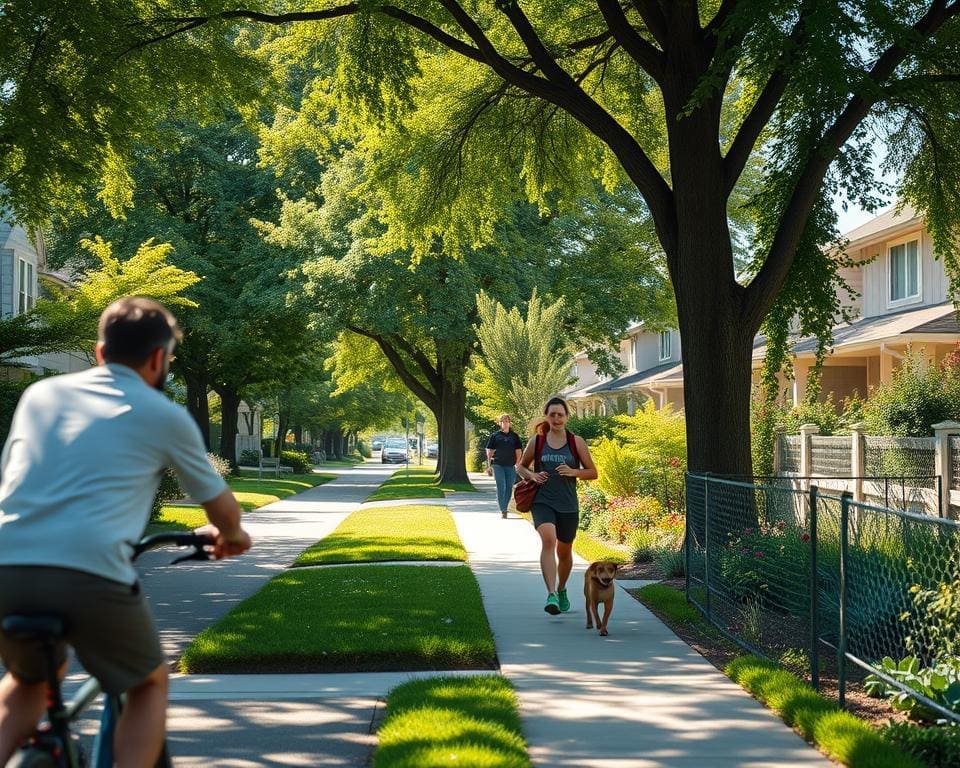The influence of our surroundings on lifestyle is profound and often underestimated. The physical, social, and natural environments shape our behaviours and daily habits, directly impacting our overall well-being. Research indicates that neighbourhood design, the availability of green spaces, and the dynamics of community engagement play critical roles in habit formation and mood regulation. By acknowledging these environmental impacts, we can begin to optimise our surroundings for a healthier and more fulfilling life.
The Impact of Environmental Factors on Daily Habits
The surroundings we inhabit play a crucial role in shaping our daily habits and lifestyle choices. Understanding how environmental factors impact our routines can lead to improved habit formation and healthier living. These factors encompass not just the physical aspects of our environment but also the social and emotional elements that influence our behaviour.
Understanding Environmental Influence
Environmental influence begins at home and extends to the broader community, affecting our day-to-day decisions. Elements such as the availability of parks, public transport, and community spaces contribute significantly to how we choose to engage in activities. Additionally, research indicates that a visually appealing environment can boost motivation and encourage healthier behaviours.
Examples of Environmental Factors
- Access to public transport can facilitate easier travel for exercise and social activities, promoting stronger daily habits.
- Proximity to recreational facilities, such as gyms and parks, encourages regular exercise and fosters an active lifestyle.
- The aesthetic quality of neighbourhoods has been linked to improved mental health, influencing overall lifestyle choices.
- Weather conditions frequently impact outdoor engagement and physical activity levels, showing how climate shapes our habits.
- Cultural practices and social norms within a community can reinforce or hinder specific lifestyle choices.

How your surroundings affect your lifestyle
Surroundings play a pivotal role in shaping our lifestyles, particularly through social interactions and community engagement. Active participation in local events fosters connections, creating a supportive network that can enhance overall mental well-being. Engaging with others cultivates friendships and a sense of belonging, essential factors in leading a fulfilling life.
Social Interactions and Community Engagement
Strong social interactions are frequently associated with improved mental health. When individuals engage with their communities, they experience increased feelings of belonging and support. Participating in local events, volunteering, and joining clubs can create valuable social ties. These connections not only provide comfort but can also inspire positive changes in one’s lifestyle.
The Role of Nature in Well-being
The presence of nature impacts our mental well-being significantly. Studies indicate that access to green spaces can alleviate stress, boost mood, and promote physical activity. Natural environments encourage outdoor activities, helping individuals connect with their surroundings. Urban planning that incorporates parks and green areas not only benefits individual health but enriches community life, supporting a holistic approach to well-being.
The Connection Between Space and Mental Health
Understanding the intricate relationship between our physical surroundings and mental health is crucial for enhancing well-being. The spaces where we live and work significantly influence anxiety levels and productivity. Creating effective spaces can lead to a more harmonious life, fostering emotional clarity and mental resilience.
Clutter and its Effects on Anxiety
Living with clutter can have detrimental effects on mental health, often amplifying anxiety levels. A disorganised environment creates a visual overload, making it challenging to concentrate. Studies suggest that individuals surrounded by clutter experience heightened stress, which directly impacts their overall mood. Conversely, an organised space promotes a sense of control and accomplishment, helping to alleviate feelings of anxiety.
Comfortable Spaces for Productivity
Designing comfortable and effective spaces can significantly enhance productivity. Factors such as proper lighting, harmonious colour schemes, and ergonomic furniture contribute to a positive atmosphere. A well-thought-out environment increases focus and efficiency, making it easier to tackle daily tasks. By prioritising mental health through mindful space management, individuals can create environments that not only inspire creativity but also foster well-being.
Urban vs Rural Living: Lifestyle Differences
Urban and rural living each offer unique experiences that shape daily routines and social interactions. The access to amenities in urban areas creates a vibrant lifestyle, while the charm of rural living often nurtures deeper community connections. Understanding these distinctions enhances appreciation for different environments.
Access to Amenities and Services
Urban living generally provides residents with a wealth of amenities that simplify daily life. From diverse culinary options to numerous healthcare facilities and educational institutions, the availability of services fosters a dynamic lifestyle. In contrast, rural living may offer fewer amenities but compensates with serene surroundings and space, promoting leisure and relaxation. This slower pace allows residents to engage meaningfully with one another and their environment.
Cultural Influences on Lifestyle Choices
The cultural influences that permeate urban settings often shape lifestyle choices regarding diet, recreation, and leisure activities. Urban living includes exposure to diverse traditions and cuisines, encouraging residents to explore varied diets. Meanwhile, rural living frequently upholds local customs that influence meal preparation and community gatherings, fostering close-knit relationships. These cultural elements play a significant role in defining how people enjoy life and interact within their respective communities.
Creating Healthy Surroundings for a Better Life
Designing healthy surroundings significantly contributes to overall well-being and lifestyle improvement. Thoughtful interior design plays a crucial role in shaping our environments, influencing not just aesthetics but also our mood and productivity. By consciously selecting colours, layouts, and furnishings, individuals can create spaces that enhance comfort and functionality.
Interior Design and Lifestyle Choices
The choices made in interior design directly affect daily life. Warm colours can evoke feelings of happiness and calmness, while clutter can lead to stress and distraction. Incorporating elements that promote organisation, such as built-in shelving or multifunctional furniture, aids in creating a peaceful atmosphere. Smart design choices enable people to cultivate productive environments, supporting their personal and professional goals.
The Importance of Green Spaces
Access to green spaces is vital for fostering a sense of community and encouraging physical activity. Parks, gardens, and even small indoor plants can greatly enhance a person’s quality of life. Engaging with nature not only provides a visual and sensory experience but also promotes mental clarity and emotional resilience. Small additions, like potted plants or vertical gardens, can create a serene ambiance conducive to relaxation and reflection.
Personalising Your Environment for Positive Change
Creating a personalised environment is a powerful tool for fostering positive change in your life. When you tailor your home and surroundings to reflect your values and interests, you create a space that not only resonates with who you are but also inspires motivation and encourages lifestyle improvements. Simple choices in décor, colour schemes, and organisation can have a remarkable effect on your mood and overall well-being.
Engaging with your community is another vital aspect of personalisation. By participating in local events or supporting small businesses, you reinforce your connection to the environment around you. This local engagement not only enhances your sense of belonging but also contributes to shared goals within your neighbourhood, promoting a healthier, more vibrant community life.
Embracing personalisation means taking actionable steps towards transforming your surroundings. Whether it’s incorporating elements of nature into your living space or curating a collection of items that spark joy, every decision counts. By consciously shaping your environment, you position yourself to reap the benefits of improved mental clarity, enhanced creativity, and deeper fulfilment in your day-to-day activities.









